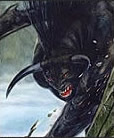Forum
Welcome Guest |
|
|---|---|
 Author Author |
Topic: |
|---|
| Naneth |
|
||||||||
| gwendeth |
|
||||||||
| Aelfwine |
|
||||||||
| gwendeth |
|
||||||||
| gwendeth |
|
||||||||
| Bellenion |
|
||||||||
| Naneth |
|
||||||||
| gwendeth |
|
||||||||
| Naneth |
|
||||||||
| Bellenion |
|
||||||||
| Naneth |
|
||||||||
| Members Online |









 VT47
VT47 I am one of those who has to 'rely' *sigh* on the commentaries, etc. that get posted various places.
I am one of those who has to 'rely' *sigh* on the commentaries, etc. that get posted various places. ):
):

 , that Tolkien might have meant to replace it (this essay in VT47 is dated around 196
, that Tolkien might have meant to replace it (this essay in VT47 is dated around 196